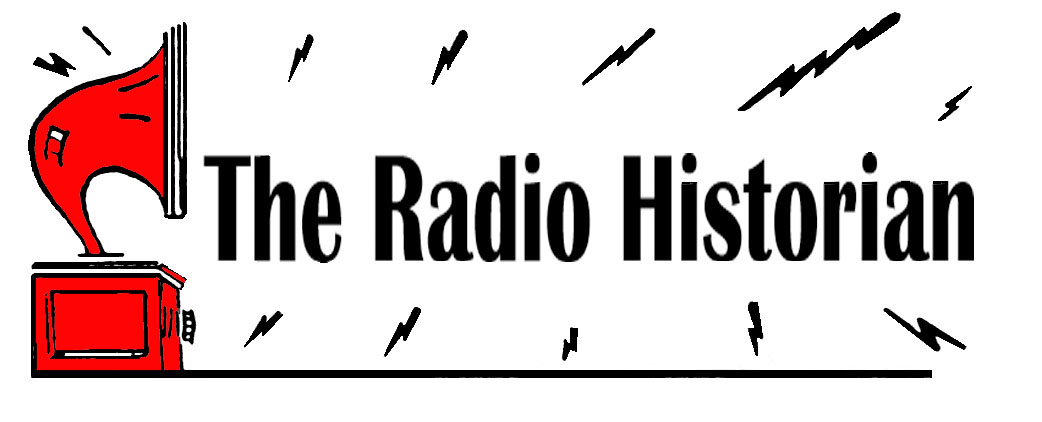Originally, NBC radio had just two program production centers - San Francisco to serve the Pacific Coast, and New York City for the rest of the country. But because of the enormous cost of broadcast lines the network leased from AT&T, it determined that another production center in the middle of the country would quickly pay for itself, saving over $1 million a year in line costs. Thus it was that NBC opened its Chicago studios in 1930. The space chosen was the top two floors of the brand-new Merchandise Mart -- the largest building in the world at the time.
The $3 million NBC facility contained six floating studios, four of which were two stories in height. Special viewing rooms on the second floors allowed sponsors to look in on the productions. Besides creating network programs (mainly daytime serials for the Blue Network), the programs of NBC’s Chicago stations WENR and WMAQ all came from Merchandise Mart.
Merchandise Mart in Chicago, as it appeared when it opened in 1929. NBC occupied the top two floors.
The giant Studio "A" in Merchandise Mart measured 32 x 47 feet. It was lit with G.E. "Sunlight Lamps", chosen to permit the clear reading of music scores and scripts. The second-floor windows were the sponsor's observation booths, from which programs could be viewed in progress.
Another view of Studio "A". It was the home of such famous NBC programs as ‘Fibber McGee and Molly’, ‘The First Nighter’ and the ‘Carnation Contented Hour’.
The green décor of Studio "A" was accented by large bronze grills that covered the studio organ pipes.
A studio orchestra on the stage of Studio "A".
Another view of Studio "A" with a full orchestra and singers.
Studio D measured 57 x 42 ft., with a ceiling height of 26.5 ft. It was decorated in tones of brown and gold.
The comfortable "Library Studio" was used by invited guest speakers and dignitaries who might be intimidated in a large studio setting.
This view shows the control room for one of the large radio studios. The engineer is operating a rudimentary audio mixer.
This 1938 view of a control room shows a glimpse of an improved audio mixer.
This 1951 improved audio mixer still occupies one of the original 1930's cabinets.
This is a floor diagram, showing the layout of the Merchandise Mart studios as originally built in 1930.
The Master control room in Merchandise Mart, as it appeared in 1931.
A clearer view of the master control room, as it appeared after the massive audio switching desk was installed in the mid 1930's. (Colorized image)
This map hung on the wall of master control for over 50 years. Light bulbs indicated the location of each NBC station - red and blue lights for the Red and Blue Networks, and orange lights for the Pacific Coast Network. (Rich Samuels photo)
An engineer works on the wiring behind a long row of audio amplifiers. Each amplifier was powered from batteries to provide hum-free audio.
This diagram indicates the audio switching connections that were made through Master Control.
The performers of an unidentified program originating from NBC's Chicago studios in 1933.
Jan Garber and his "Yeast Foamers Orchestra" was a popular NBC program in the 1930's. Seen here are Lee Bennett, Jan Garber, and Virginia Hamilton.
Another view of Jan Garber's Yeast Foamers.
One of the most elaborate productions to come out of Chicago was the "Empire Builders" program, fictional stories of the old West sponsored by the Great Northern Railway, 1929-31.
This page from Popular Mechanics Magazine in 1931 describes the details seen in the previous image.
The full crew of actors and musicians of an "Empire Builders" performance.
The cast of an "Empire Builders" performance of "Carmencita", 1930.
A rehearsal of an "Empire Builders" episode takes place in the Library Studio.
Some of the sound effects crew with the specialized effects devices used on "Empire Builders".
A close-up showing the mechanism used to create railroad track sounds on "Empire Builders".
"Empire Builders" sometimes used microphones on the roof of Merchandise Mart to create sound effects that were too complicated for the studio.
The live broadcast of "Public Hero No. 1", 1938. The program dramatized the efforts of rural police departments in apprehending lawbreakers.
NBC sportscaster Hal Totten broadcasts from Chicago in 1935.
NBC sportscasters Hal Totten and Clem McCarthy broadcast a boxing match.
Studio "A" received a major facelift after World War II to improve acoustics.
Another view of the remodeled Studio "A".


































